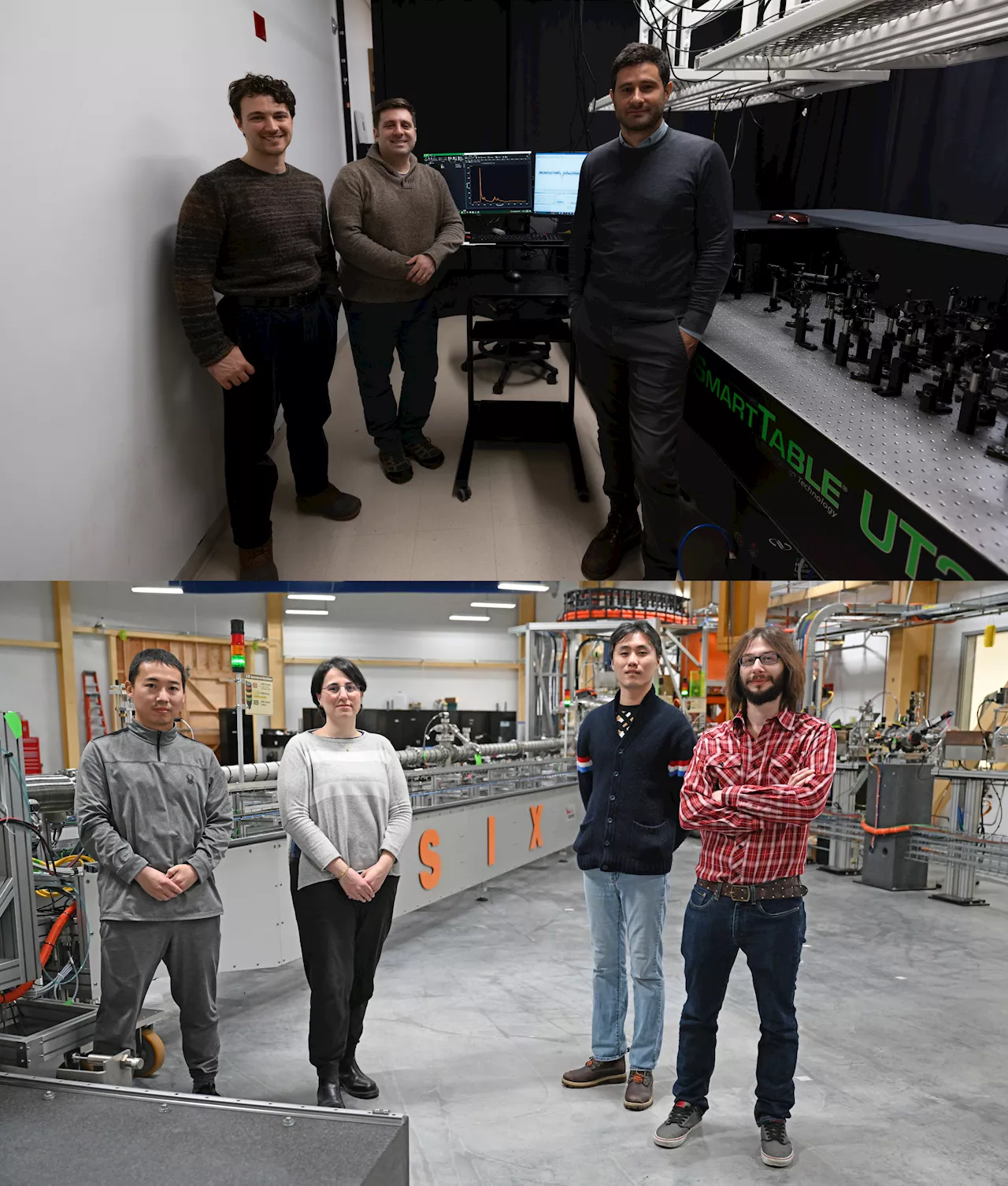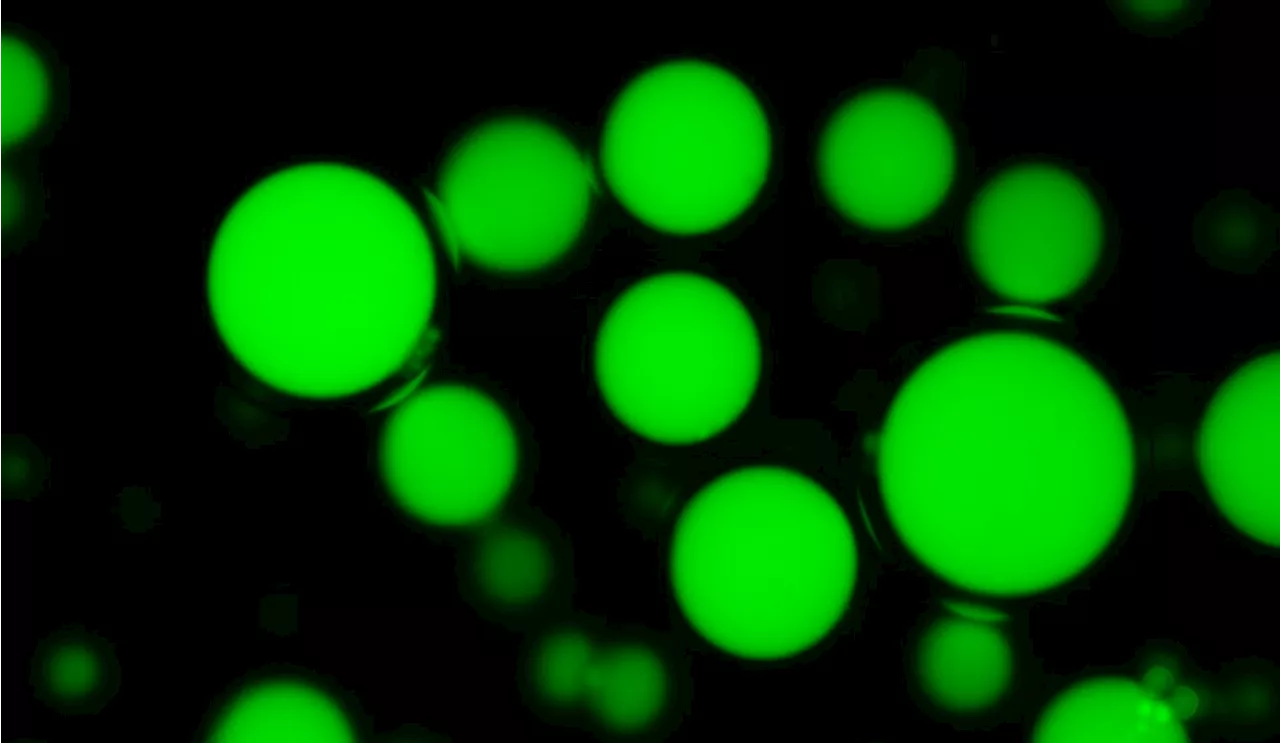Researchers used commercially available tabletop lasers to create tiny, atomically sharp nanostructures in samples of a layered 2D material called hexagonal Boron Nitride (hBN). The new nanopatterning technique is a simple way to modify materials with light--and it doesn't involve an expensive and resource-intensive clean room.
Researchers used commercially available tabletop lasers to create tiny, atomically sharp nanostructures in samples of a layered 2D material called hexagonal Boron Nitride . The new nanopatterning technique is a simple way to modify materials with light--and it doesn't involve an expensive and resource-intensive clean room.
The new nanopatterning technique, developed in the lab of Professor Alexander Gaeta, is a simple way to modify materials with light -- and it doesn't involve an expensive and resource-intensive clean room.Several well-established techniques exist to modify materials and create desired nanopatterns, but they tend to require extensive training and expensive overhead.
"Modern society is based on miniaturization, but it's been much harder to shrink devices that rely on light than electrons," explained physics PhD student and co-author Samuel Moore."By harnessing strong hBN atomic vibrations, we can shrink infrared light wavelengths by orders of magnitude." A break can be extended as long as desired once started, and samples as thick as 80 nanometers and as thin as 24 nanometers have been unzipped -- theoretically, the bound could be much lower. This gives researchers plenty of options to modify hBN and explore how its nanopatterning can influence its resulting properties, without having to gear up in a clean room bunny suit."It really just depends on your ultimate goal," said Chen.
That problem shared similarities to other problems Chen tackles in her time outside the lab as a boulderer, a form of rock climbing in which climbers scrabble up low, rugged rock faces without harness equipment to catch them if they fall."In bouldering, the potential climbing routes are called problems, and there's no right answer to solving them," she said.
Materials Science Nanotechnology Physics Graphene Civil Engineering Engineering And Construction Spintronics
Norge Siste Nytt, Norge Overskrifter
Similar News:Du kan også lese nyheter som ligner på denne som vi har samlet inn fra andre nyhetskilder.
 Study shines light on properties and promise of hexagonal boron nitride, used in electronic and photonics technologiesSingle-photon emitters (SPEs) are akin to microscopic lightbulbs that emit only one photon (a quantum of light) at a time. These tiny structures hold immense importance for the development of quantum technology, particularly in applications such as secure communications and high-resolution imaging.
Study shines light on properties and promise of hexagonal boron nitride, used in electronic and photonics technologiesSingle-photon emitters (SPEs) are akin to microscopic lightbulbs that emit only one photon (a quantum of light) at a time. These tiny structures hold immense importance for the development of quantum technology, particularly in applications such as secure communications and high-resolution imaging.
Les mer »
 Boron deficiency in oilseed rape transcriptome resembles a wounding and infection responseBoron deficiency has a devastating effect on oilseed rape and related plants. However, little is known about the underlying genetic mechanisms. A study shows that the response to persistent or short-term acute boron deficiency is similar to that seen in the response to pests and infections.
Boron deficiency in oilseed rape transcriptome resembles a wounding and infection responseBoron deficiency has a devastating effect on oilseed rape and related plants. However, little is known about the underlying genetic mechanisms. A study shows that the response to persistent or short-term acute boron deficiency is similar to that seen in the response to pests and infections.
Les mer »
 Ben Boron raises expectations in his second season at Grayslake Central: ‘It was a great addition’Boron, who attended Rolling Meadows as a freshman, has become a star at Grayslake Central.
Ben Boron raises expectations in his second season at Grayslake Central: ‘It was a great addition’Boron, who attended Rolling Meadows as a freshman, has become a star at Grayslake Central.
Les mer »
 Researchers 'unzip' 2D materials with lasersIn a new paper published on May 1 in the journal Science Advances, researchers at Columbia Engineering used commercially available tabletop lasers to create tiny, atomically sharp nanostructures, or nanopatterns, in samples of a layered 2D material called hexagonal boron nitride (hBN).
Researchers 'unzip' 2D materials with lasersIn a new paper published on May 1 in the journal Science Advances, researchers at Columbia Engineering used commercially available tabletop lasers to create tiny, atomically sharp nanostructures, or nanopatterns, in samples of a layered 2D material called hexagonal boron nitride (hBN).
Les mer »
 Scripps researchers are laser-focused on forecasting bluff failure along California's coastResearchers mount LiDAR scanners onto trucks, ATVs, or drones and then traverse the coast. The scanners send out roughly 500,000 light pulses per second, which…
Scripps researchers are laser-focused on forecasting bluff failure along California's coastResearchers mount LiDAR scanners onto trucks, ATVs, or drones and then traverse the coast. The scanners send out roughly 500,000 light pulses per second, which…
Les mer »
 Researchers develop tiny droplets that harness laser light to detect disease markersA team of researchers led by Nanyang Technological University, Singapore (NTU Singapore) has created tiny droplets that, when activated by laser light, can detect viral protein biomarkers indicating the presence of certain diseases.
Researchers develop tiny droplets that harness laser light to detect disease markersA team of researchers led by Nanyang Technological University, Singapore (NTU Singapore) has created tiny droplets that, when activated by laser light, can detect viral protein biomarkers indicating the presence of certain diseases.
Les mer »
